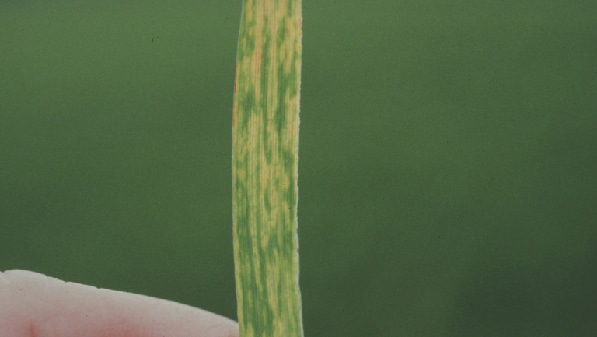Fusarium Head Scab/Blight
Fusarium head blight (scab) is caused by a fungus that affects the seed head. Infected heads will be dead or have bleached out florets; some of the floret may remain green as the blight may only affect a portion of the head. This is commonly seen scattered throughout the field and most prevalent in high humidity and high moisture conditions. Plants in the flowering stages are the most susceptible. Infected seeds will be pink or salmon colored and black spores may develop as it progresses. The infected seeds may be contaminated with vomitoxin, shriveled, and will result in a lower test weight. These seeds should not be saved to plant the following year. Corn and barley are other hosts for this fungus. It can live in the residues of these host crops for years, so management of debris and crop rotation is critical for controlling this fungus. Appropriate fungicides can be used for control as well. Some wheat varieties also have resistance to this fungus, so be conscious of the cultivars chosen if fusarium head blight is an issue in your area.
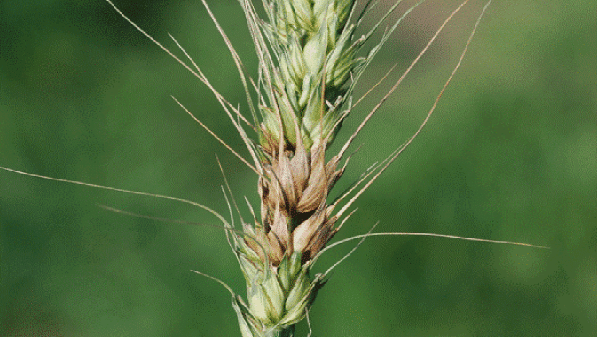
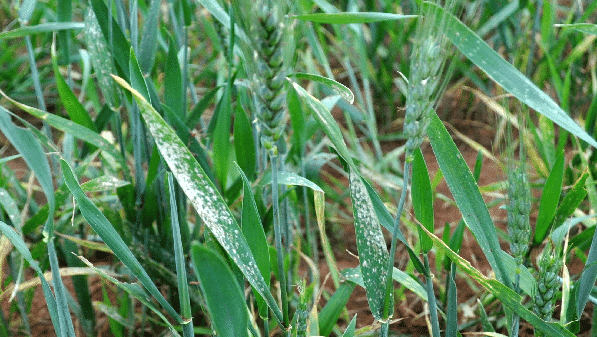
Powdery Mildew
Powdery mildew, as seen on soybeans will cause patches of cottony/whitish/gray patches on the upper leaf surface. As it develops, it will turn a gray/brown color with black fruiting bodies becoming visible on the mildew. Leaves opposite the fungus may show chlorotic patches. Powdery mildew is a fungus that likes high nitrogen situations, high humidity, and cool temperatures. For control, fungicides may be effective and controlling residues is important as it overwinters in them.
Rusts
Rust can be seen in three different forms; leaf rust, stem rust, and stripe rust. It will appear as chlorotic or brown spots on the leaves or stems. Stripe rust will appear as yellow streaks down the leaves or have patches of raised orange pustules. Rust is caused by a fungus that thrives in cool, wet conditions. For control, fungicides may be used but the most effective methods are planting early maturing varieties, destroying alternative hosts in and around the field.
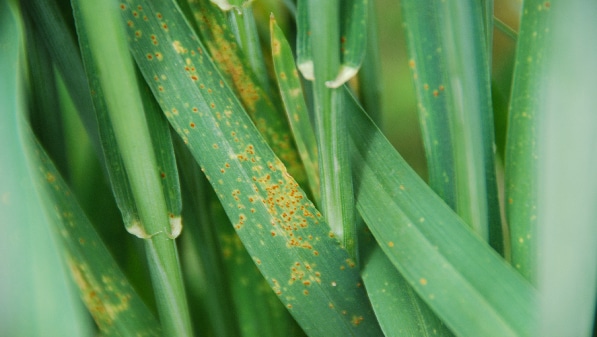
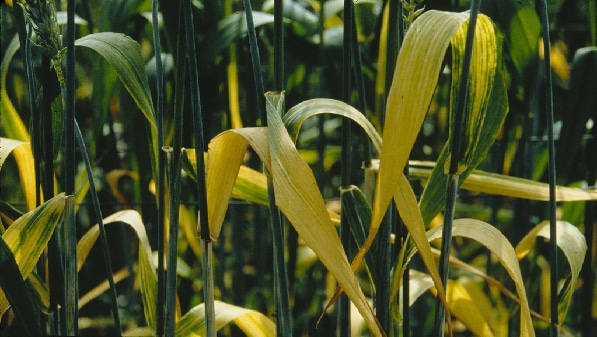
Barley Yellow Dwarf Virus
Barley yellow dwarf virus is a virus that can be transmitted by a few species of aphids. The flag leaves of infected plants will begin to yellow at the tips and leave margins, possibly turning red, orange, green or brown in color. These plants will be stunted with shorted internodes. Spreading of this virus is completely dependent on aphids which are more prevalent in cool, wet conditions. Make sure to control grassy weeds in and along the field.
Septoria Glume Spot
Septoria glume spot is a fungus that causes seeds to shrivel and shrink and have a low test weight. Commonly found when septoria leaf blotch is present, glume spot will turn the glume and chaff dark brown to black, with a purplish tint. The glume may look water soaked and turn gray as fruiting bodies begin to form. This fungus can survive in the residues of infected crops and spores can be spread far by wind. The development is favored during times of moderately warm weather with frequent rainfall and humid conditions. Effective ways of control include crop rotations, managing crop residues and infected seeds.
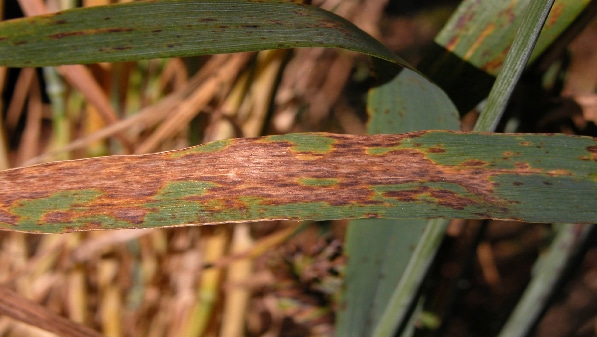
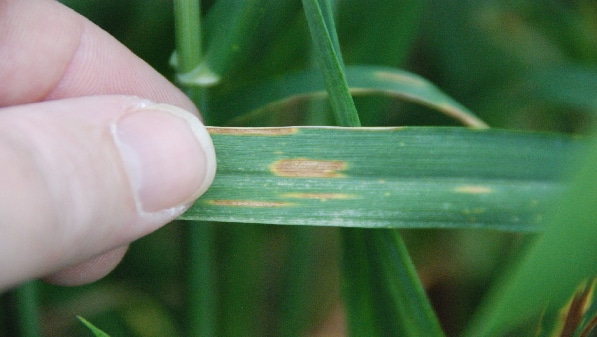
Septoria Leaf Blotch
Very similar to septoria glume spot, the fungus infects leaves in the lower canopy first, slowly progressing up the canopy. Leaves will have chlorotic specks that will eventually enlarge to become irregular with brown/reddish center and a yellow halo. This is a common precursor for septoria glume spot. Conditions of warm weather, frequent rain and humidity conditions favor the development of this fungus. Control infected crop residues to minimize impact.
Soil Borne Mosaic Virus
Soil borne mosaic virus (SBMV), infects the root hairs and penetrates the roots. As described in the name, it survives in the soil and thrives in wet areas or areas with poor drainage. Cool temperatures along with short days will favor the virus. Once temperatures get to be over 75 degrees Fahrenheit, the virus will be subdued. Infected plants will have yellow/pale green mosaic mottling and streaking, varying in degree throughout the field. Normally found in irregular patches, scattered around the field. Effective methods of control include planting as close to the optimum date for your region as possible. Avoid planting too early.
